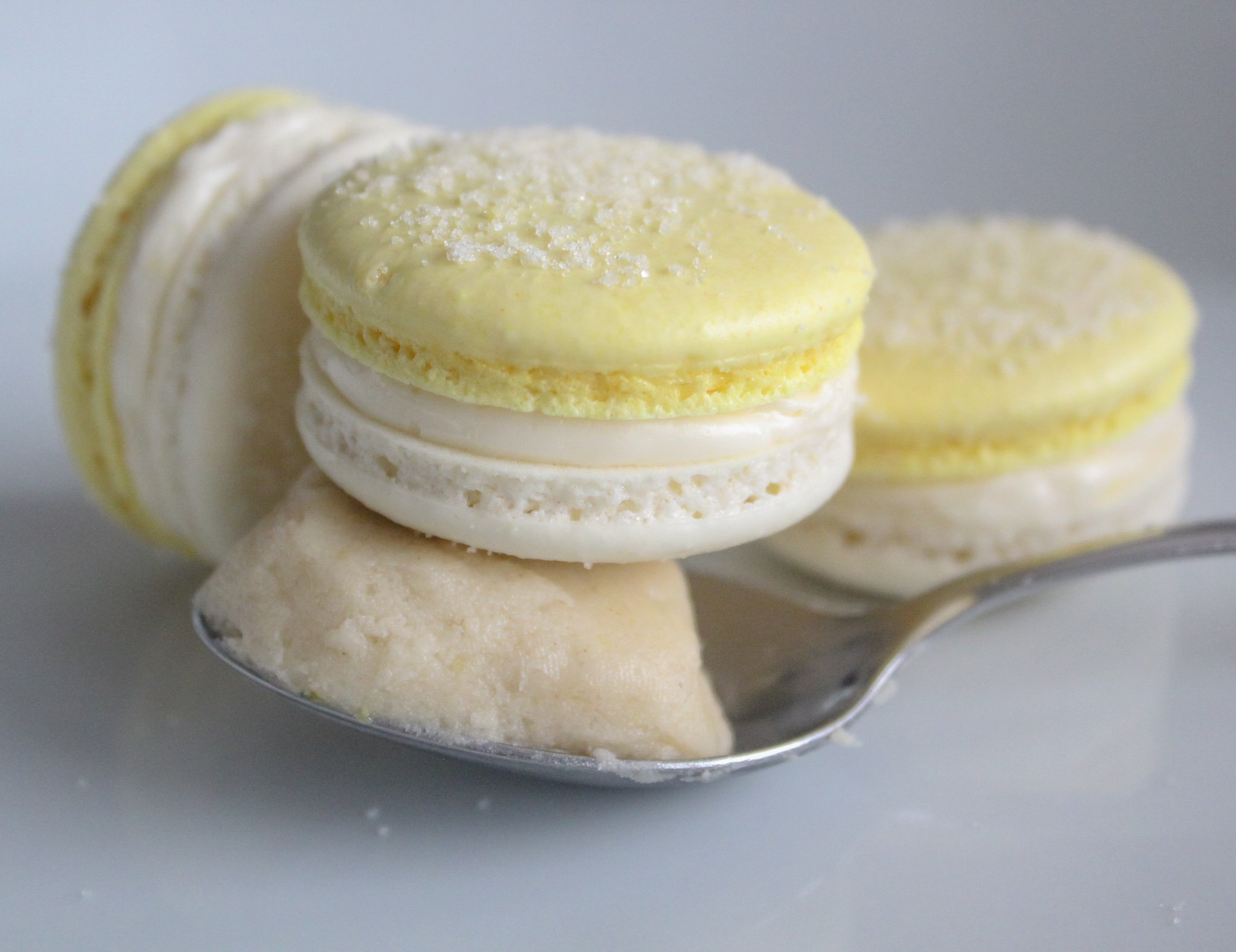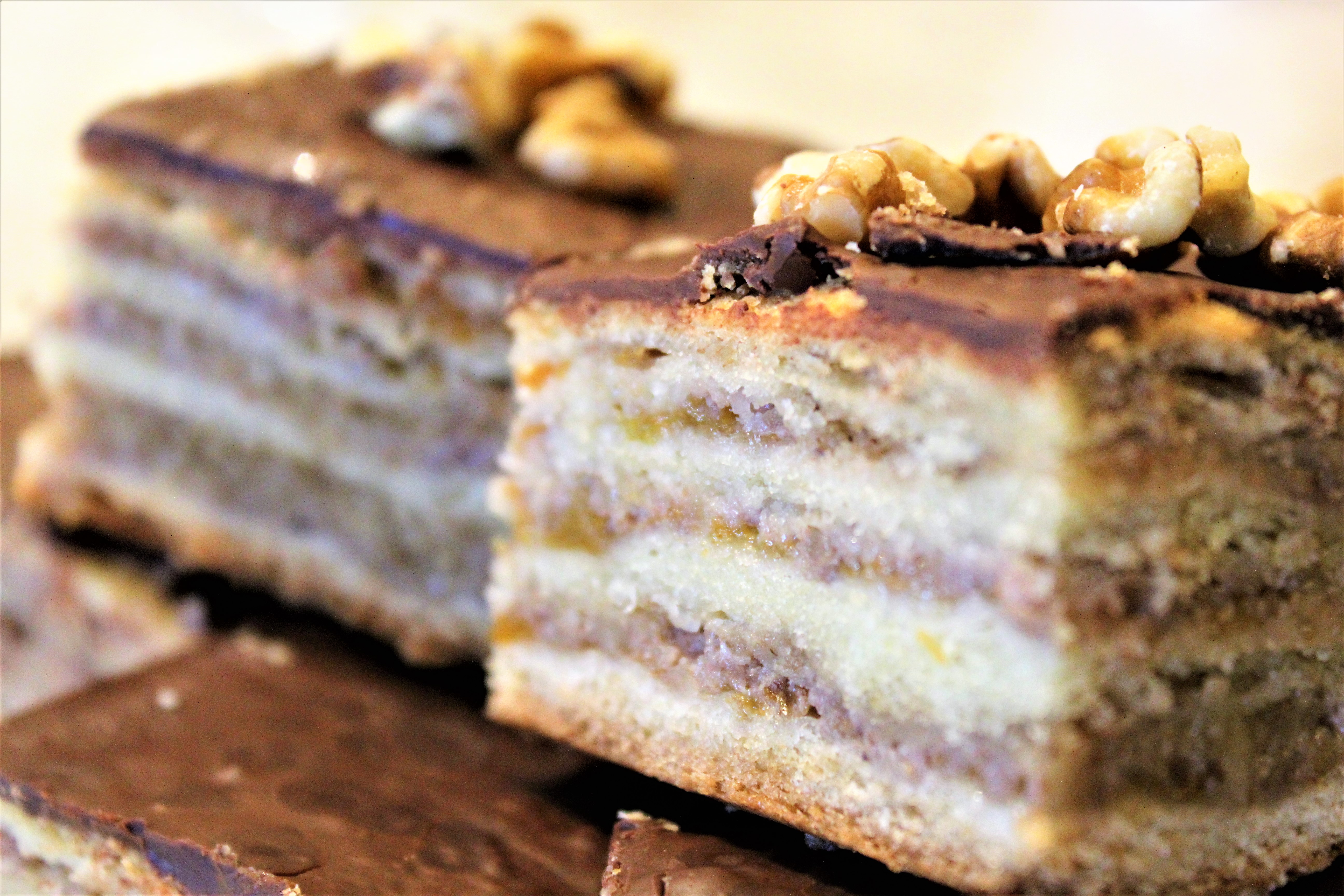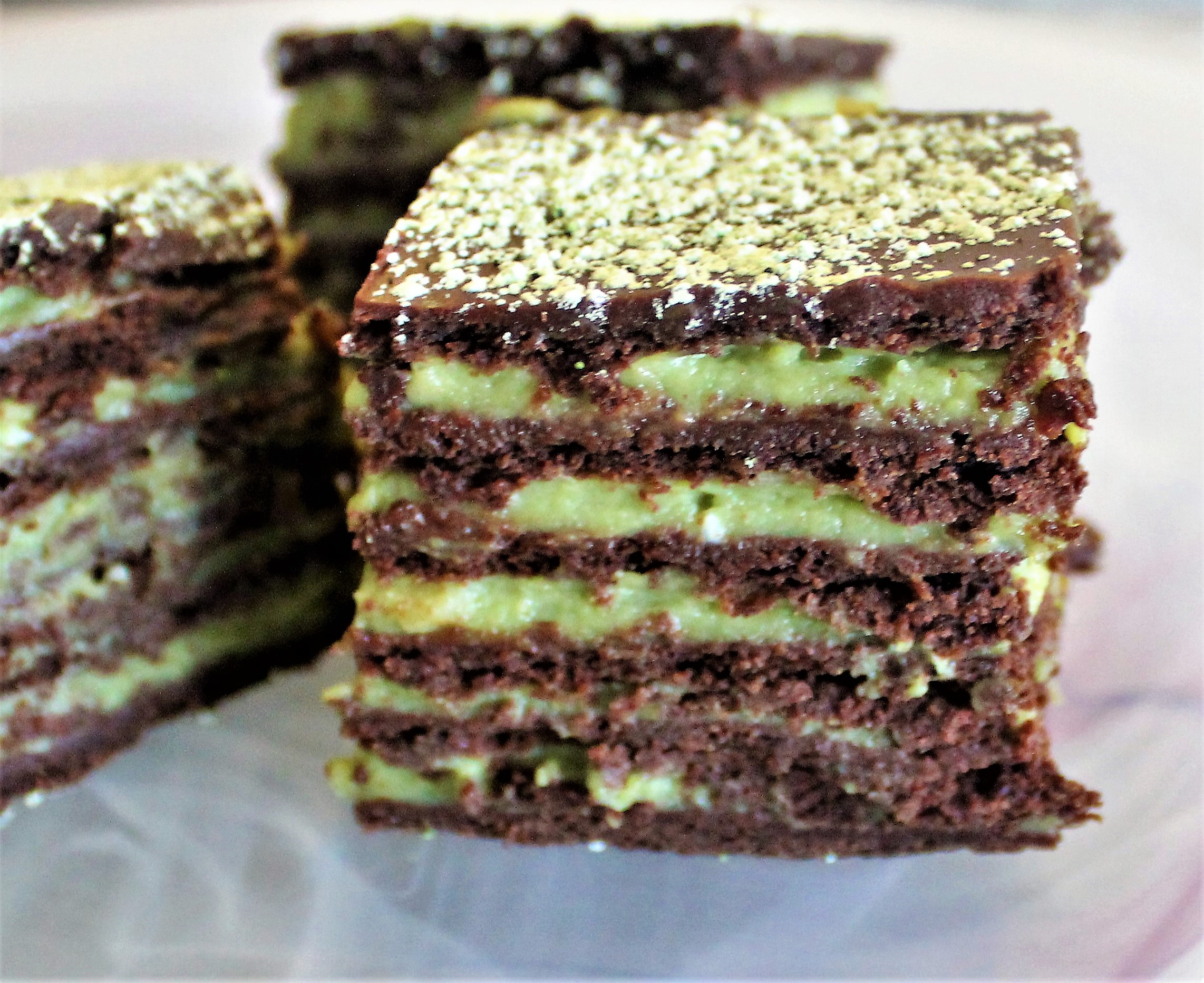
How to Flavor Macaron Shells



The Intro: Why you should flavor your shells!
Before you start reading this post wide-eyed, excited, and full of macaron-baking-enthusiasm; this isn’t going to be a macaron shell recipe (don’t stop reading though! This has information that you’re unlikely to find in many other places). Rather, for those of you who’ve already tried making macarons and have the basics down, this post will probably give you a new perspective when creating macaron flavors.




A macaron shell is basically an almond meringue (egg whites, sugar, and almond flour), which means it’s temperamental, moody, and equal parts evil and delicious. If you’ve ever had the pleasure (or horror) of going through the macaron-making process, you’ve probably quickly realized 1. why macarons are so expensive; 2. that every little thing can cause catastrophic failure (you think I’m being dramatic, but try making some macarons and get back to me on that…); and 3. humidity is evil. But nothing can compare to finally achieving a beautiful, light, and successful shell; it honestly sometimes feels more gratifying than when I graduated college…

Today I’m going to talk about taking a standard macaron shell to the next level. That lies in flavoring the actual shells. Now, I realize there is some controversy concerning this. Some people claim that the filling is the most important and adding extra ingredients to the shell does more harm than good; while I agree that flavoring the shells can cause more issues, finding ways to overcome these problems results in a superior final product.

At Poeme, I flavor every shell according to the flavor-profile I have chosen, and it makes an immense difference. For one, the aroma is much more unique when you bring each different flavor up to your mouth to try; most macarons I’ve had don’t usually have distinctive smells between the variety of flavors. Smell is critical to taste; if you don’t believe me, believe science: researchers believe that 80 percent of what we taste is actually contributed to smell.

Secondly, there actually is a difference in taste if you flavor the shell effectively (keep reading to find out how to do this). When I try my shells plain before filling, they each have a characteristic flavor that goes beyond almonds and sugar (although almondy-sugar goodness is solid as well and I worship it). That (along with the much lighter texture of the shells I make in comparison to others) is one of the main differences between Poeme and other macaron shops: we ensure that flavor is in every possible component for an incredible first bite. On a side note, make sure to check out this post on how to make the perfect macaron (it covers all the rest, not only the shells!).

So enough of the promotional stuff, I think you get it: FLAVOR. YOUR. SHELLS! And then thank me later 🙂
How to Flavor the Macaron Shells
But how do I do this in a way that won’t completely ruin the structure of the shell? Because macarons are a meringue-based dessert, any amount of extra moisture or an ingredient with an abrasive texture could deflate or destabilize an otherwise successful meringue. In order to combat this, you must find ways to use dry forms of every flavor (or liquid flavorings that you don’t need a large quantity of to pack a punch).

Here’s a general list for possible flavorings (hopefully this will give you some of your own ideas on how to flavor your shells; the only thing I won’t cover is chocolate shells, as those require a completely modified recipe):
- Dried Zest: (from oranges, lemons, limes, grapefruit…if you can zest it, dry it!); I recommend leaving the zest overnight to dry (uncovered). I find that orange zest takes the longest to dehydrate, so keep that in mind! In a pinch, you can microwave the zest for about 15-30 seconds and squeeze out the excess water. You may also just squeeze out the water without microwaving if you would like 🙂
- Freeze-Dried Fruit: this can be bought both in powdered or whole-fruit form. I find that Trader Joe’s has a nice selection of freeze-dried fruits, but many natural food stores will have a good set of options (if all else fails, go to Amazon…they have everything). You’ll want to make sure there isn’t any extra stuff added (like sugar), because that can easily mess up your meringue. To use it, just grind it up in a spice grinder or food processor and use 1-2 tbsp. of it in your normal macaron recipe. NOTE: You need to be really careful with how much fruit powder you add as it is probably the most volatile ingredient on this list to add to a macaron, but don’t let that scare you–it will greatly depend on your shell recipe; I would experiment with how much powder your recipe can take, starting with around 1 tsp. if you have more fragile shells.
- Instant or Ground Coffee: in order to get coffee flavor into macarons, you have to use a very finely-ground coffee or instant powder. Instant powder will give you a more mellow coffee flavor in the shell than ground, and the color will look more golden (versus a speckled appearance from ground coffee). The choice of which to use is yours; both will work fine (ha…ha…get it? Fine-ground coffee, they’ll work fine…okay, I’ll show myself out now…). Starbucks coffee (whether you like their product or not) is an easily-obtainable instant coffee powder in the grocery store and actually has a pleasant flavor in the shell; I welcome you to use a ground or powdered form of your favorite coffee, however. I like to use my favorite local coffee (shout-out to LIMA Coffee Roasters) in bean form and grind it myself, as I like the intense flavor freshly ground coffee provides, as well as the speckled appearance. NOTE: Fresh coffee grounds will also add less moisture to your shells than instant coffee, so I would also recommend using coffee grounds if you have less experience with flavoring macaron shells/have a more fragile shell recipe.
- Vanilla Bean or Vanilla Paste: to add vanilla flavor to your macaron shells, you’ll need something with less moisture and more impact than vanilla extract. Using the scrapings of a vanilla bean in your standard macaron shell recipe is one option (usually one vanilla bean is enough for a batch of 20-40 macarons). This option is quite expensive, though (I swear, one day I’m going to just start hoarding vanilla beans and selling them on the black market…these things are worth more than gold, it seems!). For a cheaper (but still effective) route, you can use vanilla paste: it’s made from the vanilla bean, and you only need a few drops to flavor the macaron shells. Additionally, you could infuse the granulated and powdered sugar in the recipe with a vanilla bean: just put a vanilla bean in a jar with the sugar for a few days (super simple!). It won’t give you those flecks of vanilla bean in the shell, but the flavor will be just as good.
- Ground Nuts or Seeds: the standard macaron shell already uses ground almonds (and some believe that only almonds can be used for a “true” macaron…but I say be creative! Flavor is king at Poeme!). To add a different nut-flavor to the macaron, substitute half the almond flour (or whatever ration you want–I would stick to keeping the shells at least 50% almond, though, to be the most safe) with an equivalent amount of another ground nut or seed (hazelnuts, pecans, pistachios…there’s so many options!). It’s your choice whether to roast the nuts before grinding them; it all comes down to what flavor you’re trying to create. I would recommend grinding the nuts or seeds at least a day before making the shells, however. This is because freshly-ground nuts sometimes have too much moisture for the shells (especially high-fat nuts like pecans or walnuts).
- Dried OR Fresh Herbs: Fresh herbs are delicious, but usually too-high in moisture for macaron shells–however, I have successfully used a small amount (around 1-2 tsp. or so) of fresh herbs in macaron shells with great success and would highly recommend trying it out (my advice is to chop them up finely, then sprinkle them into the batter–processing them with the dry ingredients can add too much moisture runoff to the almond flour and sugar). If you are worried about moisture content, though, I would start with grinding up dried herbs (around 1-2 tbsp.) with your dry ingredients, then working your way up to fresh herbs. Now, herbs may be an unusual addition themselves to a macaron for some of you; but I encourage you to experiment with them (basil, thyme, and rosemary are all great places to start!). Herbs add a fresh, more complex flavor, particularly to fruity macaron flavors.
- Ground Spices: this is an easy addition to flavor macaron shells that adds a large amount of flavor and delightful aroma (I was once baking my cinnamon shells in the oven over the holidays and my family thought I was making cinnamon rolls…they were sad that they couldn’t eat anything right away!). Any spice appropriate to your flavor concept will work (and don’t be afraid to mix spices either).
- Dried, Unsweetened Coconut: just grind it up and use 1-2 tbsp. per batch. For added flavor, you can sprinkle the top of the shells with it before baking. If you want a whiter shell (and more coconut-y) flavor, you may also substitute around 10-20% of your almond flour with the dried coconut (processed finely in the food processor).
- Loose Leaf and Powdered Tea: this addition is a personal favorite of mine (the signature Poeme flavor is Earl Grey and Peach!). Loose Leaf tea, ground and sifted with the rest of the ingredients, adds both a nice flavor and beautiful tea-speckled appearance. Powdered Tea works well for matcha macarons; it leaves a serene green color without having to add any food coloring (now you can brag to your friends that your macarons are, in fact, healthy…just don’t mention the butter in the fillings!). Just be careful with adding matcha powder–it’s much higher-moisture than loose-leaf tea, so I would start with just a teaspoon or so then work your way up (depending on how much your recipe can take–experimentation is king here!)). If your shell recipe is more delicate, I recommend substituting some matcha powder for the almond flour, instead of adding it as an extra ingredient–depending on the strength of the matcha powder, you really won’t have to substitute much to get a vibrant color and flavor (maybe only 2-5% of matcha subsitute for the almond flour).
- Cereal: Yes, you read that right! You can actually add cereal to macaron shells, so you can make even more flavorful cereal-inspired macarons. The best way to add cereal to macaron shells is to grind it up finely in a food processor, then add it in place of 30-40% of your almond flour (your total “flour” content will be the same, just some of it will now be cereal “flour” instead of almond flour!). It’s a simple, but tasty, flavoring! I caution you, however, when dealing with multi-colored cereals, like Fruity Pebbles or Froot Loops. Mixing together all the colors could make your shells look grey, so keep that in mind if you want the look to be different. Another note to remember: not all cereals are gluten-free; since macarons are naturally gluten-free, this will obviously render this null and void, so if that’s important to you—choose gluten-free cereals!
Adding Toppings for Flavor
For those of you still concerned about flavoring the actual shells, you can experiment with topping your shells with a variety of options, both before and after baking.
Some ideas before baking can include (many of these can also be attached after baking):
- finely chopped, roasted nuts;
- dried or toasted coconut;

- freeze-dried fruits;
- cinnamon-sugar/other flavored sugars (NOTE: if using spiced/flavored granulated sugar, make sure shells are slightly dry before topping, so the sugar doesn’t dissolve into the macaron batter too much. Depending on how “loose/liquid” your shell recipe is, this could be 5-15 minutes after piping).

- chocolate (or other flavored) baking chips;

- and even chopped or ground cereal (the possibilities are endless!).
How to add flavor/toppings AFTER baking:
- Once the shells are baked, you can drizzle them with something, like butterscotch or caramel sauce; melted chocolate; powdered sugar glaze/royal icing, etc. You can then use this drizzle to also attach another topping–such as sprinkles, chopped nuts, chocolate chips, anything else you can think of!


- You can also dip or top the shells in a dark, white, milk, gold, or ruby chocolate glaze, and add toppings to those as well.



- Dip the shells in a donut-style glaze (with a base of mostly powdered sugar, loosened with milk & vanilla paste/extract/other flavorings) for donut-flavored or cake-themed macarons; just make sure the glaze is not too loose, as it will be too high-moisture for the macarons. You want it to feel a little “too thick” to dip it–don’t worry, it will settle!

- Any other flavorings you can think of 🙂 I’ve used more than what’s on this list; experiment with flavors you like and exercise your creative genius!
Final Thoughts
I hope that using these ideas will help your bring your macarons to the next level (and if you have never baked these guys, that at least you were kept somewhat entertained…in fact, I’m proud and slightly surprised you made it this far!).

So go out there and flavor those shells, you guys! I mean it when I say that the difference is monumental. And make sure to check out my post on what makes a perfect macaron…it covers fillings, flavors, and textures beyond just the shells!

Happy baking everyone 🙂
Related
You May Also Like

Flavor Profile: Chocolate Hazelnut Praline Macarons
April 13, 2019
Recipe: Zerbo Kocke
February 22, 2019

